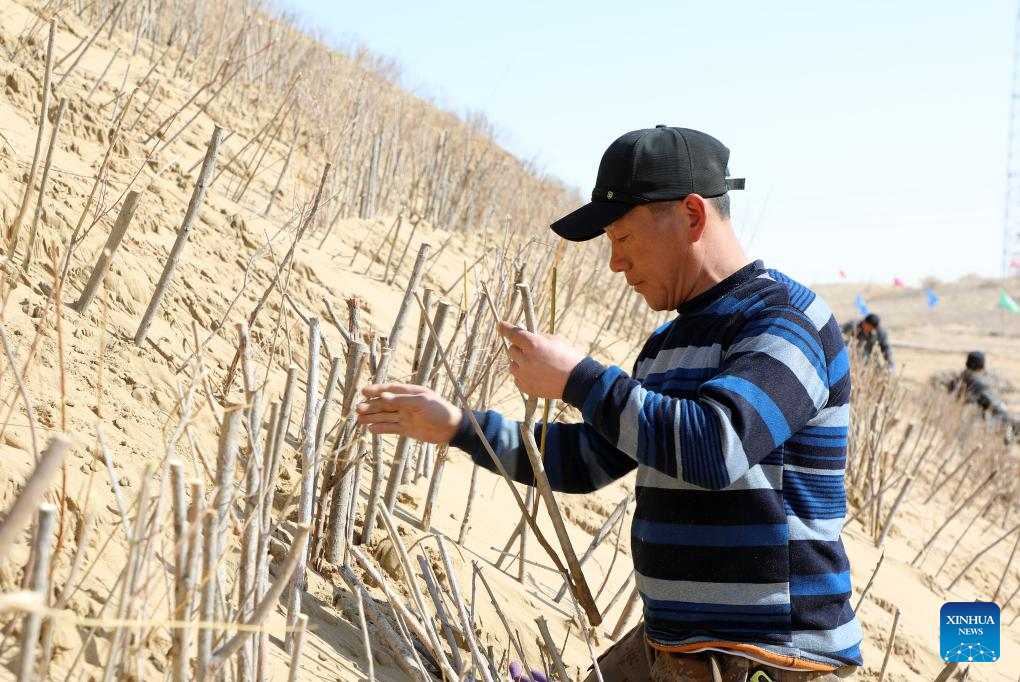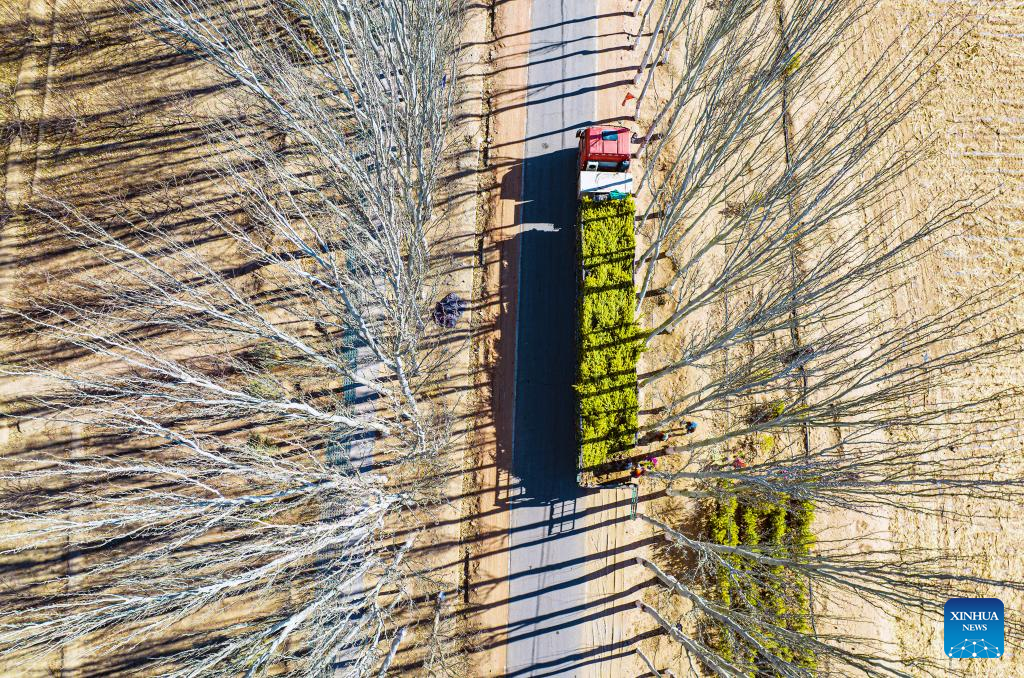
A worker builds sand barriers in Kubuqi Desert in north China's Inner Mongolia Autonomous Region, March 13, 2024. (Xinhua/Li Yunping)
HOHHOT, March 20 (Xinhua) -- No sooner had the twisting course of the Yellow River fully thawed than a spring afforestation campaign was launched on its banks with fractional vegetation coverage in Bayannur City, north China's Inner Mongolia Autonomous Region.
As the river winds through the friable landscape, the bank area suffers both from severe soil erosion and besieging sandstorms from the north.
Located on the banks of the Yellow River in Inner Mongolia are 227 million mu (about 15 million hectares) of desertified land in 35 counties of seven cities, which is the main battlefield of the government's ecological restoration work.
Not far from the river bank and on the edge of the Ulan Buh Desert, the eighth-largest in China, a large greenhouse provides seedlings for the greening campaign.
Du Yongjun, director of the greenhouse, said they have cultivated a large stock of seedlings, such as haloxylon ammodendron and jujube, which are local tree species with strong resistance to drought, salt, and alkali.
Workers use dried straw to build neat rows of square-shaped sand barriers before the seedlings are planted.
While the greenery belts are expanding through years of afforestation along deserts and river embankments, the local authorities have resorted to new technology combining new energy development with sand control.
Bulldozers are shuttling in the seventh-largest desert in the country, the Kubuqi Desert, adjacent to the Yellow River in Inner Mongolia, to level the ground for building a 400-km photovoltaic belt. Greeneries are expected to appear underneath the solar energy facilities.
The innovative has already been widely adopted in north and west China, achieving integrated development of ecological restoration and energy development.
Chen Yongquan, deputy director of the Forestry and Grass Bureau of Inner Mongolia, said the region would strive to reduce the amount of sand eroded and washed into the Yellow River and carry out integrated conservation and restoration of the mountain, water, forest, farmland, lake, and grassland. ■

Workers build sand barriers in Kubuqi Desert in north China's Inner Mongolia Autonomous Region, March 13, 2024. (Xinhua/Li Yunping)

An aerial drone photo shows workers transporting saplings on the edge of the Ulan Buh Desert in north China's Inner Mongolia Autonomous Region, March 17, 2024. (Xinhua/Li Yunping)

Workers transport saplings on the edge of the Ulan Buh Desert in north China's Inner Mongolia Autonomous Region, March 17, 2024. (Xinhua/Li Yunping)



